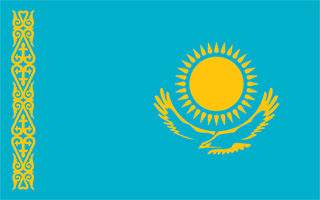Facts and Data
Webpages:
Official Unesco Page
View photos from OUR PLACE the World Heritage collection
Basis Data:
Unesco World heritage since: 2003
Size of heritage: 0.55 ha
- Buffer zone: 88 ha
Coordinates:
Longitude: 68,274°
Latitude: 43,293°
Summary
The Mausoleum of Khoja Ahmed Yasawi, in the town of Yasi, now Turkestan, was built at the time of Timur (Tamerlane), from 1389 to 1405. In this partly unfinished building, Persian master builders experimented with architectural and structural solutions later used in the construction of Samarkand, the capital of the Timurid Empire. Today, it is one of the largest and best-preserved constructions of the Timurid period.
Location on Map
Show bigger map on Openstreetmap
The Mausoleum of Khoja Ahmed Yasawi: A UNESCO World Heritage Site in Kazakhstan
The Mausoleum of Khoja Ahmed Yasawi, located in the South Kazakhstan Oblast, City of Turkestan, is a significant cultural and historical site that has been recognized as a UNESCO World Heritage site since 2003. This architectural masterpiece is a testament to the rich history and cultural heritage of Kazakhstan.
History
The construction of the mausoleum began in 1389, under the orders of Timur, the founder of the Timurid Empire. The mausoleum was intended to honor the influential Sufi poet and philosopher, Khoja Ahmed Yasawi, who lived in the 12th century. However, the construction was left unfinished after Timur's death in 1405.
Despite its incomplete state, the mausoleum became a place of pilgrimage and veneration for centuries. It gained prominence as one of the most important religious sites in Central Asia, attracting devotees from far and wide. The mausoleum's significance lies not only in its religious and spiritual importance but also in its architectural grandeur.
Architecture
The Mausoleum of Khoja Ahmed Yasawi showcases the unique architectural style of the Timurid period. The structure is a prime example of Central Asian Islamic architecture, characterized by its intricate geometric patterns, domes, and minarets.
The mausoleum's main dome, which reaches a height of 38 meters, is an architectural marvel. It is adorned with stunning turquoise tiles and intricate calligraphy, creating a mesmerizing visual spectacle. The interior of the mausoleum features a spacious hall with beautifully carved columns and arches.
Current State
Over the centuries, the Mausoleum of Khoja Ahmed Yasawi suffered from neglect and decay. However, in recent years, significant efforts have been made to restore and preserve this cultural treasure. The Kazakhstani government, in collaboration with international organizations, has undertaken extensive restoration projects to ensure the mausoleum's longevity.
Today, the mausoleum stands as a symbol of national pride and identity for Kazakhstan. It attracts tourists and pilgrims from around the world, who come to admire its architectural beauty and learn about the rich history of the region. The site has also become an important center for cultural events and festivals, further enhancing its significance.
Visitors to the Mausoleum of Khoja Ahmed Yasawi can explore the complex, which includes not only the mausoleum but also a mosque, a bathhouse, and other structures. The site offers a glimpse into the religious and cultural practices of the past, providing a valuable insight into the history of Kazakhstan and the wider Central Asian region.
In conclusion, the Mausoleum of Khoja Ahmed Yasawi is a UNESCO World Heritage site that stands as a testament to the rich history and cultural heritage of Kazakhstan. Its architectural grandeur and religious significance make it a must-visit destination for anyone interested in exploring the diverse cultural landscape of Central Asia.
